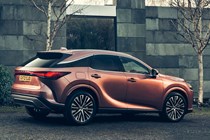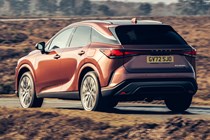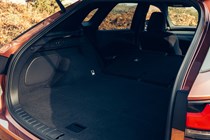
Lexus RX engines, drive and performance
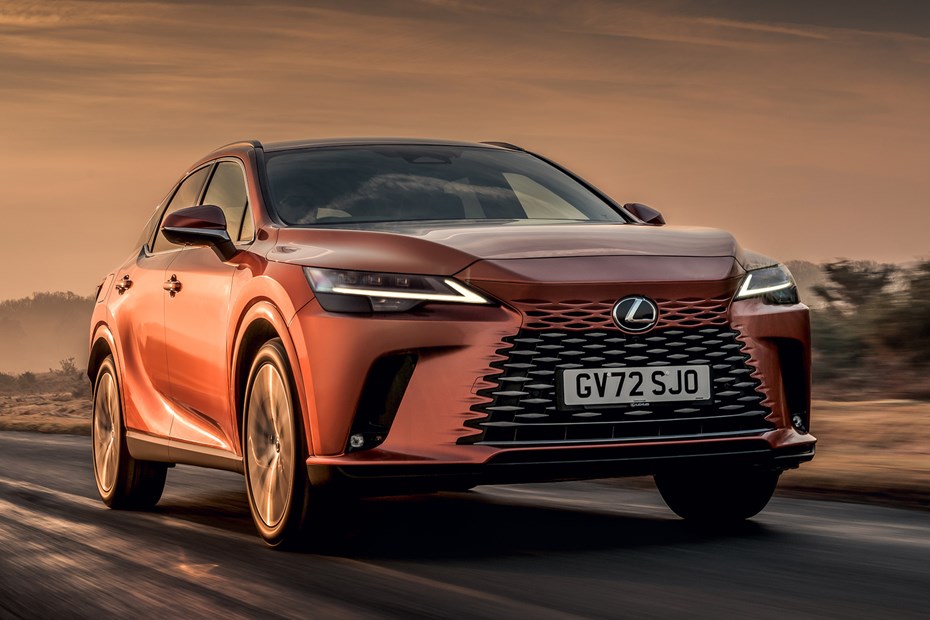
- Three engines, all hybrids
- All deliver good performance and economy
- Self-charging and plug-in models offered
Hybrid engines
The entry-level model in the RX line-up is the 350h. It’s powered by the same 250hp 2.5-litre full hybrid system found in the Toyota RAV4, and is capable of delivering more than an adequate turn of speed. Total system power output is 250hp, which delivers a 0-62mph time of 7.9 seconds. Power delivery is smooth, but extracting the maximum performance can be a raucous affair, even if the overall noise levels aren’t bad.
Above that, there’s the plug-in hybrid RX 450h+, which ups the power to 309hp. Again, it’s a powertrain shared with the RAV4 – in this case the plug-in hybrid version. The 0-62mph time is cut to 6.5 seconds, but mid-range pulling power is much, much better, making this an effortless car to drive.
It’s disapointing to note that although it’s quiet and refined as you’d imagine, especially on the motorway where it’s serene, if you extend it to get the most performance out of it, you’re greeted by a rather dull, droning engine note. This robs the RX of the premium appeal its predecessor had thanks to that car’s silky-smooth V6 engine. But overall, it’s responsive and very capable, with the added bonus of excellent 40mpg-plus capability.
At the top of the SUV’s range there’s the performance focused RX 500h. It’s powered by Lexus’s first ever turbocharged hybrid system, which comprises a 2.4-litre four-cylinder petrol engine, a pair of electric motors and a compact battery pack. It produces 366hp and has a 0–62mph time of 6.2 seconds.
Unusually for a Lexus, the 500h eschews the firms continuously variable transmission for a conventional six-speed automatic gearbox. Off-the-line performance isn’t that impressive in the days of incredibly quick electric SUVs, but in-gear punch is commendable.
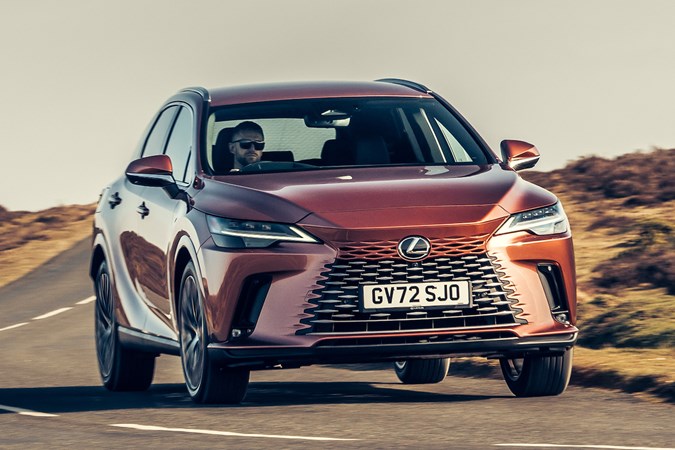
What’s it like to drive?
- Quiet, unobtrusive and effortless
- Surprisingly firm suspension
- Poor body control
It’s heavy, and this is the RX’s weakest link. The most generously equipped RX 450h+ weighs more than 2.2 tonnes – and you can tell the chassis is having a hard time managing that bulk. Drive over a dip in the road or any longer undulation and the RX compresses into the tarmac suddenly, like it’s just had a pallet of bricks dumped on its roof, suggesting that the dampers are too unyielding for the soft springs.
Despite being rather firm when it comes to dealing with lumps and bumps, there’s some squidginess in corners. Push the RX into a sharp bend and it’ll lean over like a superbike rider, which might make your passengers feel a little queasy. This poor body control isn’t unsafe, though. There’s actually an awful lot of grip available.
Because the battery pack for its PHEV system is mounted under the cabin, the RX has a very low centre of gravity. Couple that with its four-wheel drive and four-wheel steering systems and you’ll find you can take corners much quicker than the suspension would lead you to believe. But you won’t enjoy it – even in the ostensibly sporty 500h.
Curiously, even though our test car was fitted with the SUV’s largest 21-inch alloys, it managed to round off potholes, expansion joints and even those enormous craters that form around road drains. It’s refined on the motorway, too. Wind and tyre noise are kept in check and, when you’re getting around in EV mode (at speeds of up to 80mph), the powertrain is almost silent. In all, it’s a very relaxing car to drive in the right circumstances.







